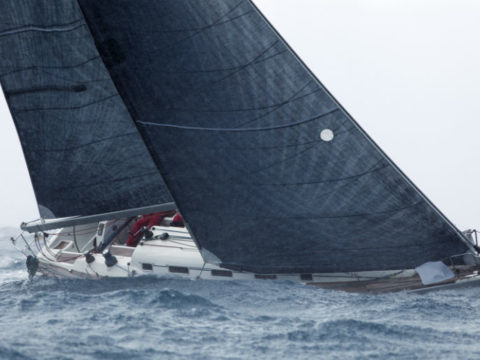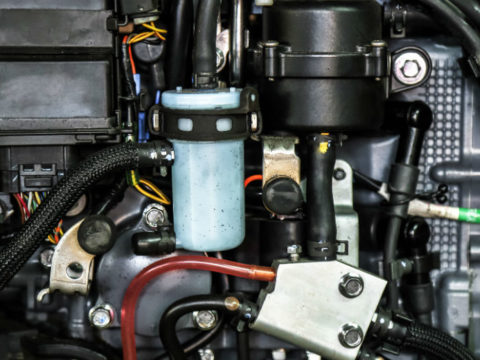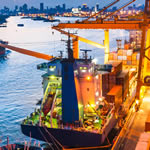As sailing has progressed, so have the safety measures around it. Those who enjoy time on their yacht need only to literally take on board some of sailings greatest safety innovations, from RTEs to sea-anchors, to make their safety and wellbeing a priority.
Here are 10 such measures which can save lives at sea – each in their own way:
AIS AIS stands for Automatic Identification System– and is a shipborne transponder which is used in commercial shipping. The information broadcast and received helps monitor shipping traffic over 300 tonnes. AIS-enabled vessels will receive information about the size, type, speed and position of other moving ships with AIS every 2 to 10 seconds. Personal AIS beacons are also available, and activate if the person wearing it falls overboard. It took marine safety to an even greater level than GPS, which was made publicly available by President Clinton in 1996.
Radar Making its mark in history with its introduction during World War turmoil, Radar is undergoing a modern-day overhaul as Navico introduce Broadband to its capabilities. This souped-up version takes its inspiration from aircraft radars, which are able to measure height when coming into land. It means an instant start-up, less power, and the capability to detect objects within 10 meters without the interference of microwaves.
RTE RTE stands for Radar Target Enhancers, which are also known as Radar Reflectors. These do pretty much what you expect – bouncing back a radar signal from another vessel so that you show up more consistently and of a greater size. If you’re a smaller vessel in low visibility, this is how you’re going to be seen in a shipping lane.
VHF radio Invented by Guglielmo Marconi in 1896, the VHF radio allowed ship-to-shore communication, where previously vessels in distress would have had to hope they had sight of land or another ship. After the Titanic tragedy, VHF became an essential on large ships. The ill-fated British passenger ship had been fitted with a Marconi radio, but this had primarily used to transmit and receive passenger messages and news reports, and warnings of icebergs from nearby vessel the Californian 15 minutes before the collision went unheeded.
GMDSS Developed through the International Maritime Organization (IMO), the Global Maritime Distress and Safety System (GMDSS) enhanced existing marine communications by creating a more effective distress alarm system. DSCs, EPIRBs, SARTs and Satellite Communications feature within this modernised system, which is designed to increase the chances that an alert is sent and received, improve rescue communication, make survivors easier to find and provide skippers with vital safety information.
Automatic lifejacket Replacing bulky, restrictive jackets that may be eschewed when they’re most needed so as not to limit mobility, the self-inflating life jacket is small and durable, even those with up to 275N of flotation. It is life-saving gear in the event that someone falls overboard when unconscious, and can be re-used by replacing the inflation canister.
Automatic liferaft Transom-mounted with a hydrostatic release, an automatic liferaft buys you live-saving minutes which may otherwise be spent getting it into position. On a sinking yacht, even getting to the raft from the cockpit locker could be a life or death struggle.
Tether A simple but vital piece of onboard equipment, a tether can keep you on board in a storm when your weary arms are failing you. The best models have three self-locking stainless steel hooks which can be operated with one hand. The stitching on any harness should be regularly checked to ensure it’s still up to the task of keeping you on board in stormy seas.
Sea anchor If a typical anchor is the handbrake of a car, a sea anchor is more of a peddle brake. It resembles more of a windsock than an anchor, and aptly is also known as a drift sock, para-anchor or boat brake. When out at sea in difficult weather and water too deep to anchor to the sand, a sea anchor works at a shallower depth by increasing the drag of the boat against the water, causing the boat to “break”. It won’t keep the vessel from straying altogether, but the drift will be greatly reduced.
Gas alarm In January 2014, two men were found dead on their boat in Whitby. After using an ageing butane gas cooker to warn themselves, Mark Arries and Edward Ide were poisoned with carbon monoxide. A gas alarm is the simplest of devices that could have the greatest of impact, not just by preventing asphyxiation, but also a gas related explosion or a fire.
If you want to find out more about how yacht insurance can cover you and your boats for accidents at sea, get in touch with one of our friendly and helpful brokers.





